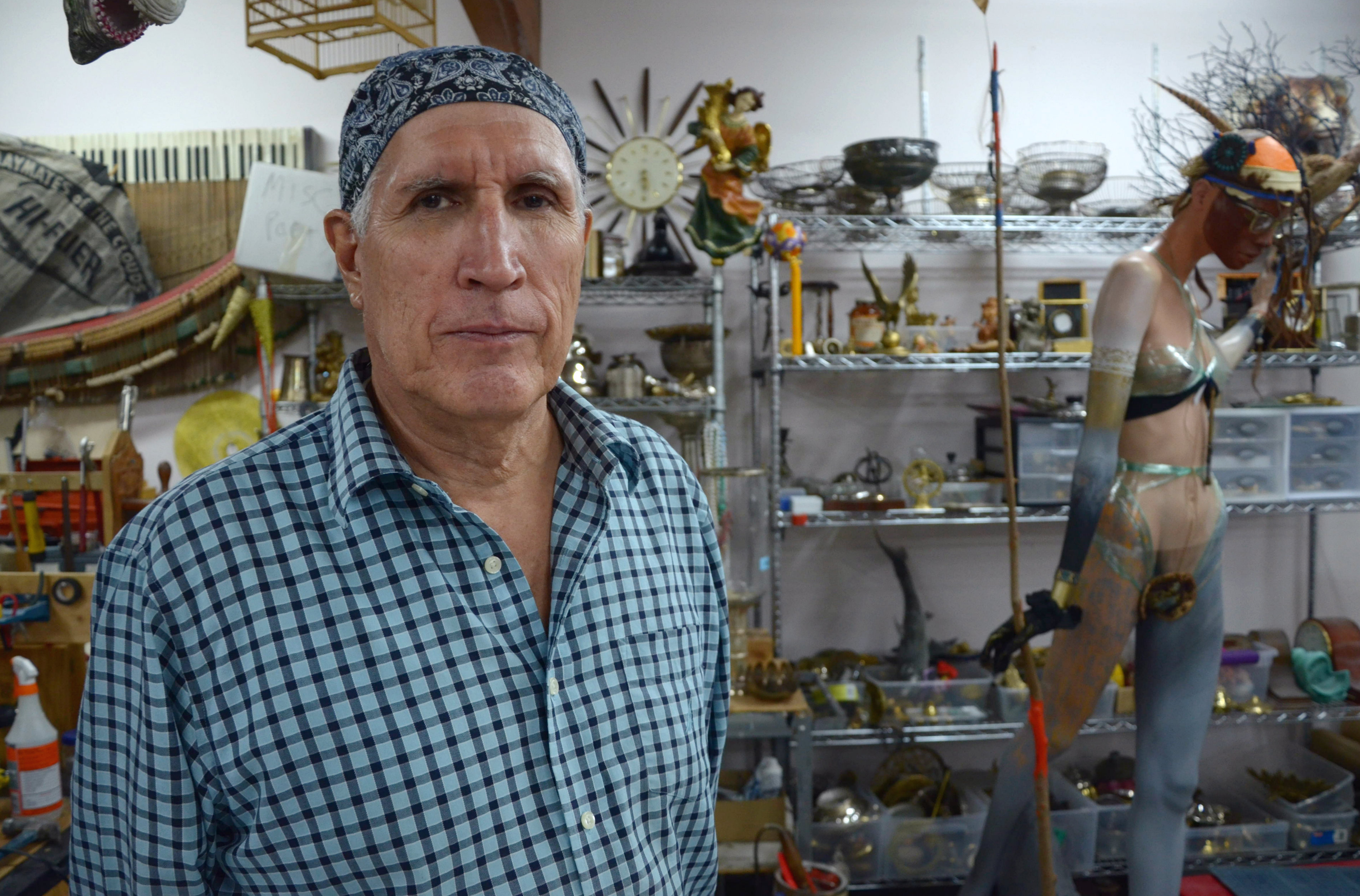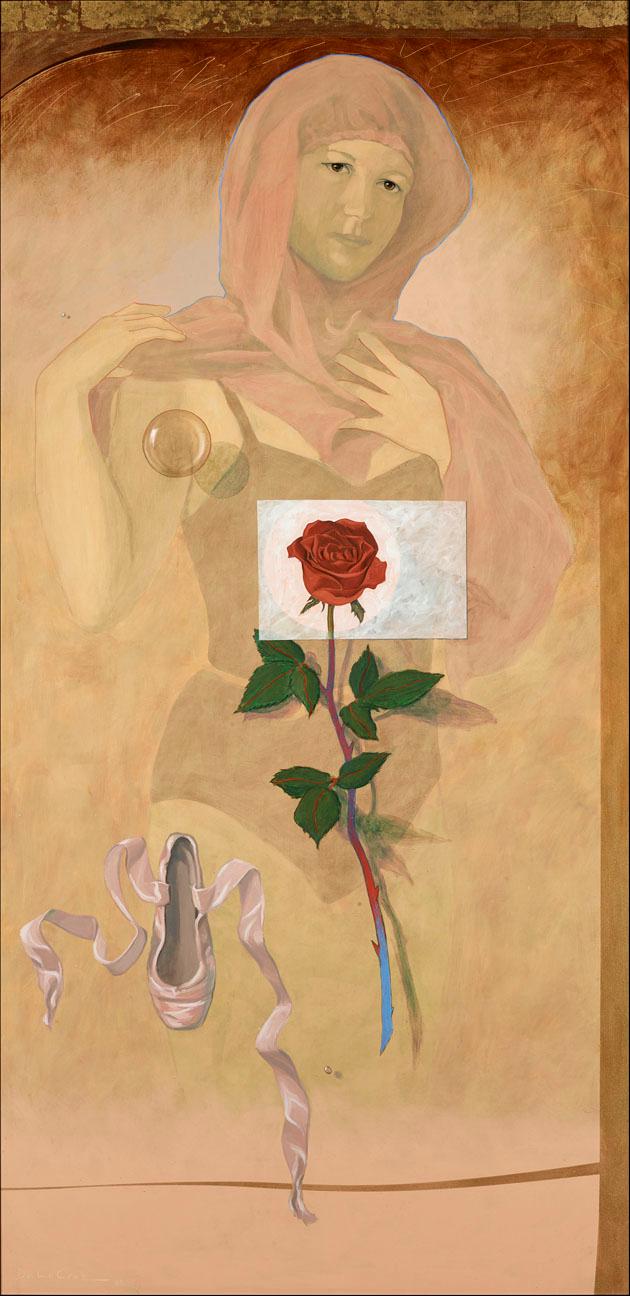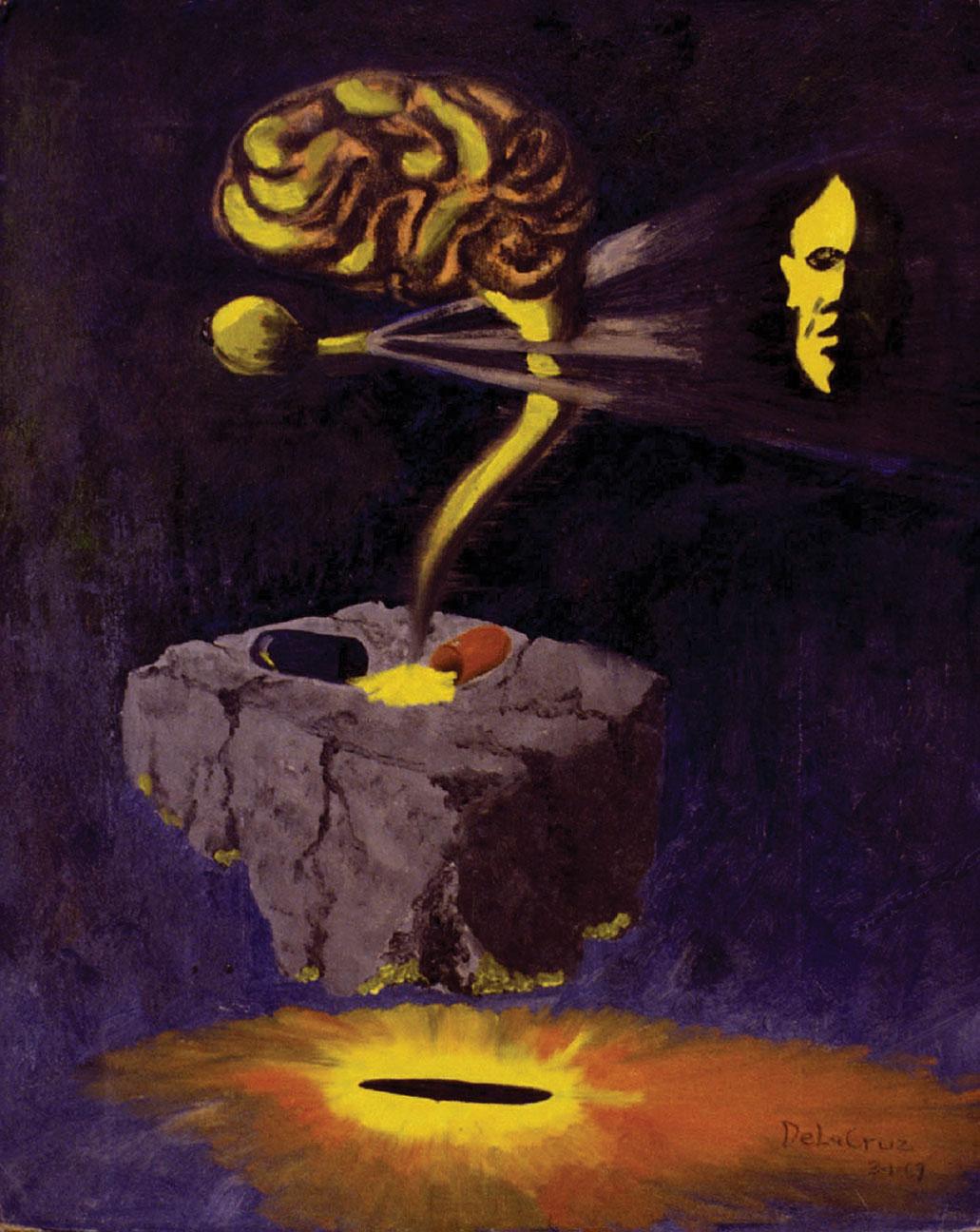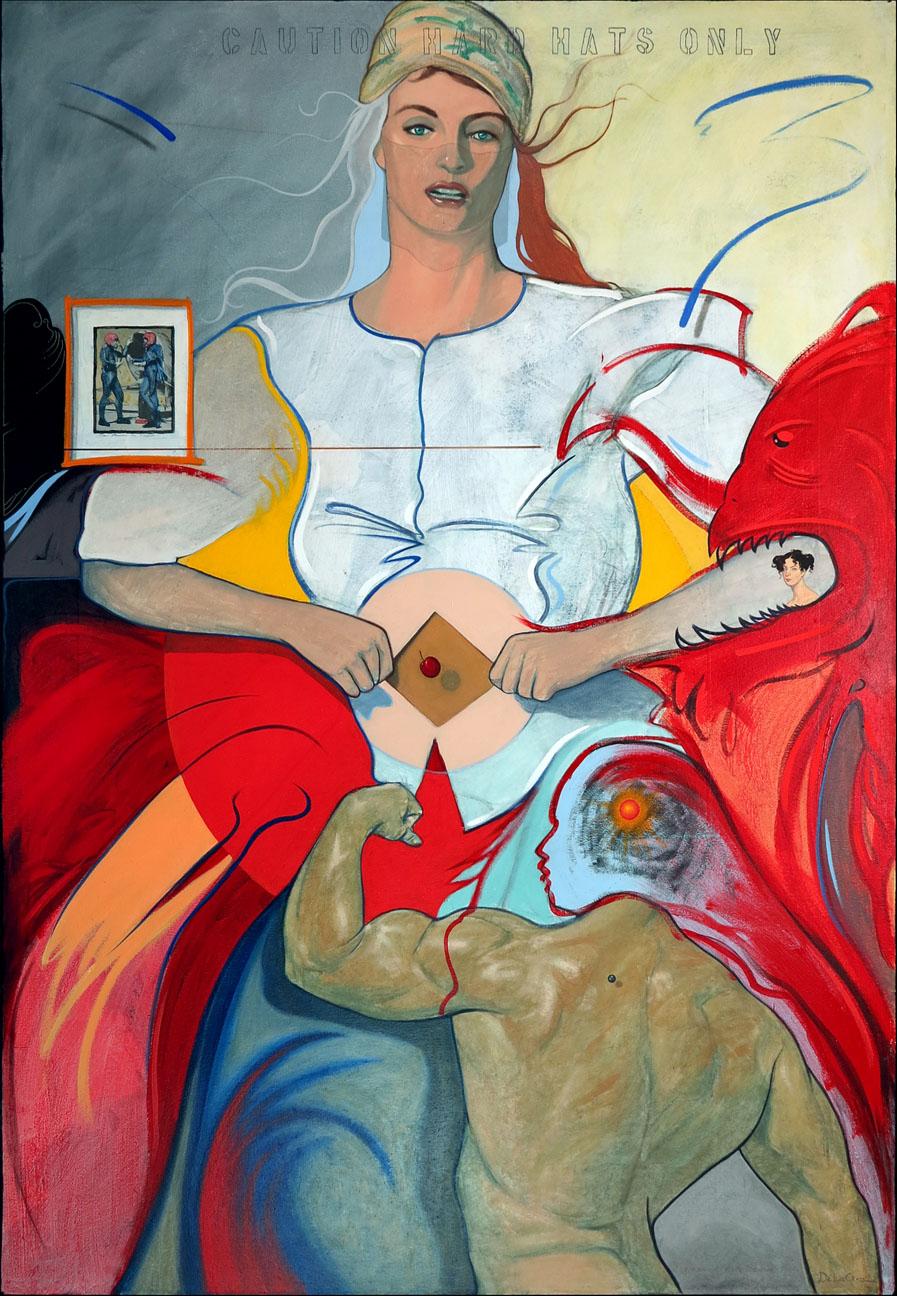
For nearly 50 years, Colorado artist Jerry De La Cruz has spent his career questioning the relationships between his subjects and the world.
“I have to explore,” De La Cruz says. “My feeling is that I’m an explorer and an archeologist.”
He’s done this through paintings, sculptures, photography and more. A retrospective of De La Cruz’s work is on display at Museo de las Americas in Denver through Jan. 16, 2016.
Random objects fill De La Cruz’s studio. That includes clocks, globes, parts from dolls and model cars, flashbulbs and even a cow vertebrae. His interest in collecting began when he was growing up in the Denver.
“I would go through dumpsters and find interesting trash and take that back home and make something of it,” De La Cruz says.
He also took things apart -- like radios and couches -- to see how they worked. As such, De La Cruz loved shop classes in school. There he made things out of wood, leather and metal.
“If I had my druthers, sculpting would have been my first choice as an art form,” he says.
But outside of those classes, De La Cruz didn’t have access to the tools. So he drew and painted more as a teen. And that’s where his retrospective at Museo de las Americas begins.
The exhibition is called “A Road Well Traveled.” It features more than 90 pieces, with the earliest dating back to 1962. It’s a pencil sketch of an Army general. But back in those days, De La Cruz didn’t intend to be a professional artist.
“My art was the thing that I did for myself,” he says.
It was actually the military that allowed De La Cruz to hone his skills. He was drafted in 1968, but he later enlisted to avoid combat during the Vietnam War. De La Cruz was stationed in Germany and installed secret equipment used to encode and decode messages. He often painted in his spare time.
After the Army, De La Cruz used the G.I. Bill to attend the Rocky Mountain School of Art in Denver. His first solo show came in 1975 at the Foothills Art Center in Golden, Colorado,
Around that time, De La Cruz moved into an artist co-op that rented out cheap studios called Art In Action. He helped manage the Denver co-op with artist Barry Rose, who still oversees the space. Rose says De La Cruz helped transform it.
“He can be fixing a toilet in the morning and painting a beautiful portrait in the afternoon,” Rose says. “He never says, ‘I can’t do that.’”

The painting caused some controversy. People questioned if De La Cruz’s work truly represented Chicano art, says Maruca Salazar -- who directs Museo de las Americas.
“It was too European for many of the artists at that time,” she says.
Salazar says that didn’t bother her because it was still a major accomplishment. And she says De La Cruz supported the Latino community in other ways, like helping underrepresented artists find places to exhibit their work.
“That was a big deal, because in the 1970s or the 80s there was basically no place for Latinos to show their work,” Salazar says.
De La Cruz has lived and worked near the Art District on Santa Fe for years. And his community involvement to this day has helped him earn this retrospective at Museo, Salazar says.
De La Cruz calls his latest creations “reliquaries” -- a nod to church shrines that hold artifacts like bones and clothes from saints. De La Cruz believes many are fake.
“I’m playing with the idea that it’s all an illusion,” he says.
De La Cruz creates tongue-in-cheek backstories for various objects. There’s the vintage tube of wart remover that he attributes to the Wicked Witch of the West or a badge he says belonged to Rosie the Riveter.
De La Cruz displays these objects in elaborate cases made from second-hand bowls, lamps and candelabras.
“It’s about the discovery of man’s passage on the earth,” he says.
In a sense, the artist is back where he started when he first repurposed discarded items as a kid. But De La Cruz won't call it coming full circle because that implies an end. And the artist says he has no plans to stop any time soon.
Continue below to see other pieces from the "A Road Well Traveled" exhibition at Museo de las Americas and to hear more from De La Cruz about the works.

"It’s a very ‘heavy’ picture because it’s about the drug influence on people," De La Cruz says. "And it’s based on a foundation that’s crumbling. So the whole psychological element of what’s going on with the person is illustrated symbolically."

“This piece had some controversial elements to it,” De La Cruz says. “It was displayed in an exhibit at the City and County Building, but it drew negative commentary because of its symbolism. It was outside the divorce court, and so this thing between the male and female was disturbing (to people).”










